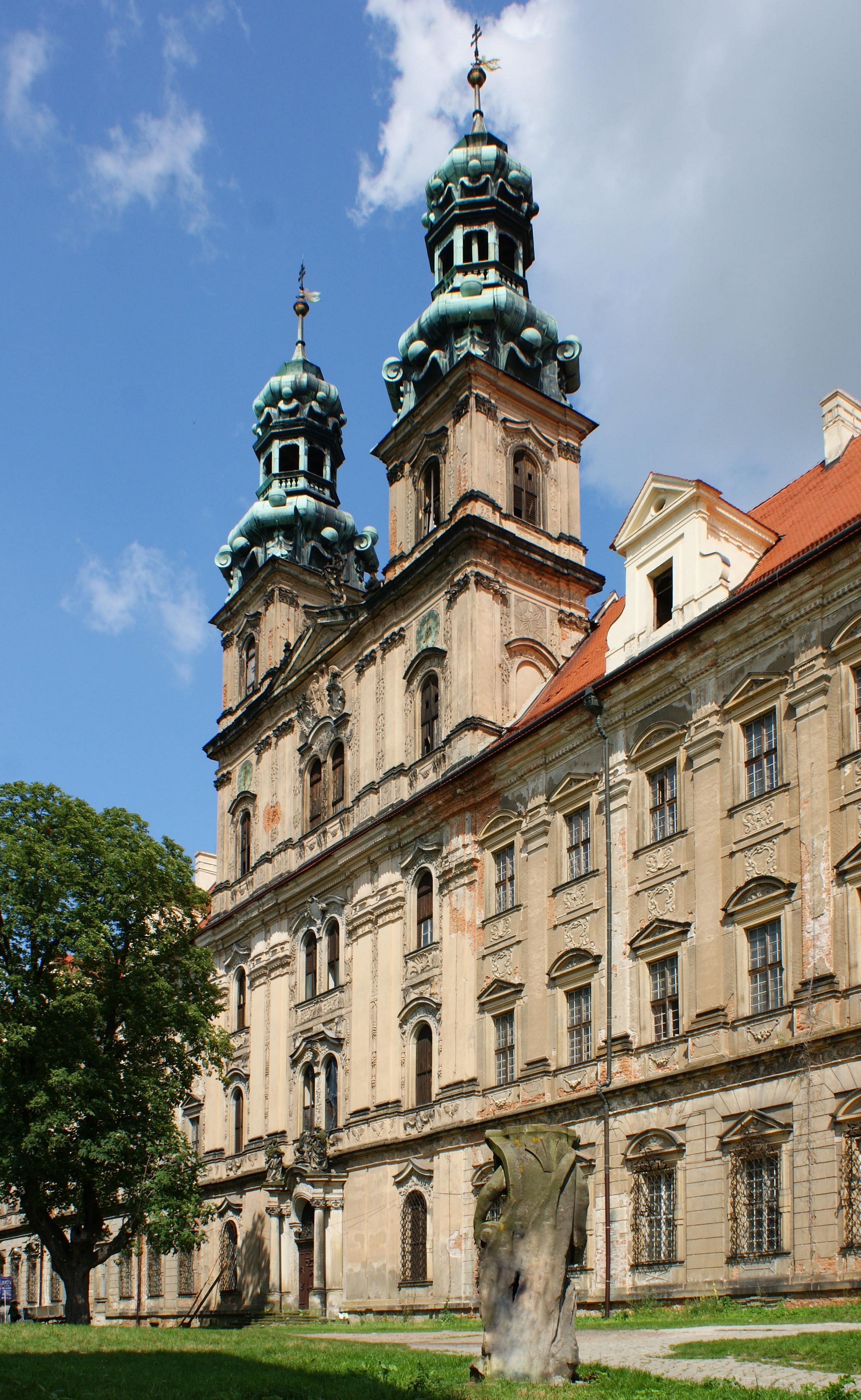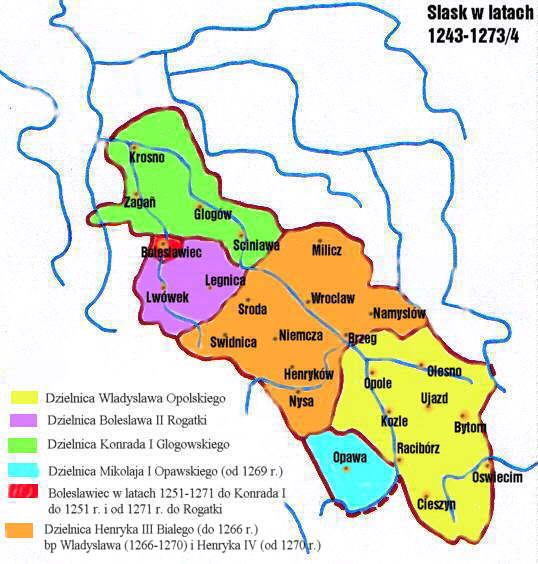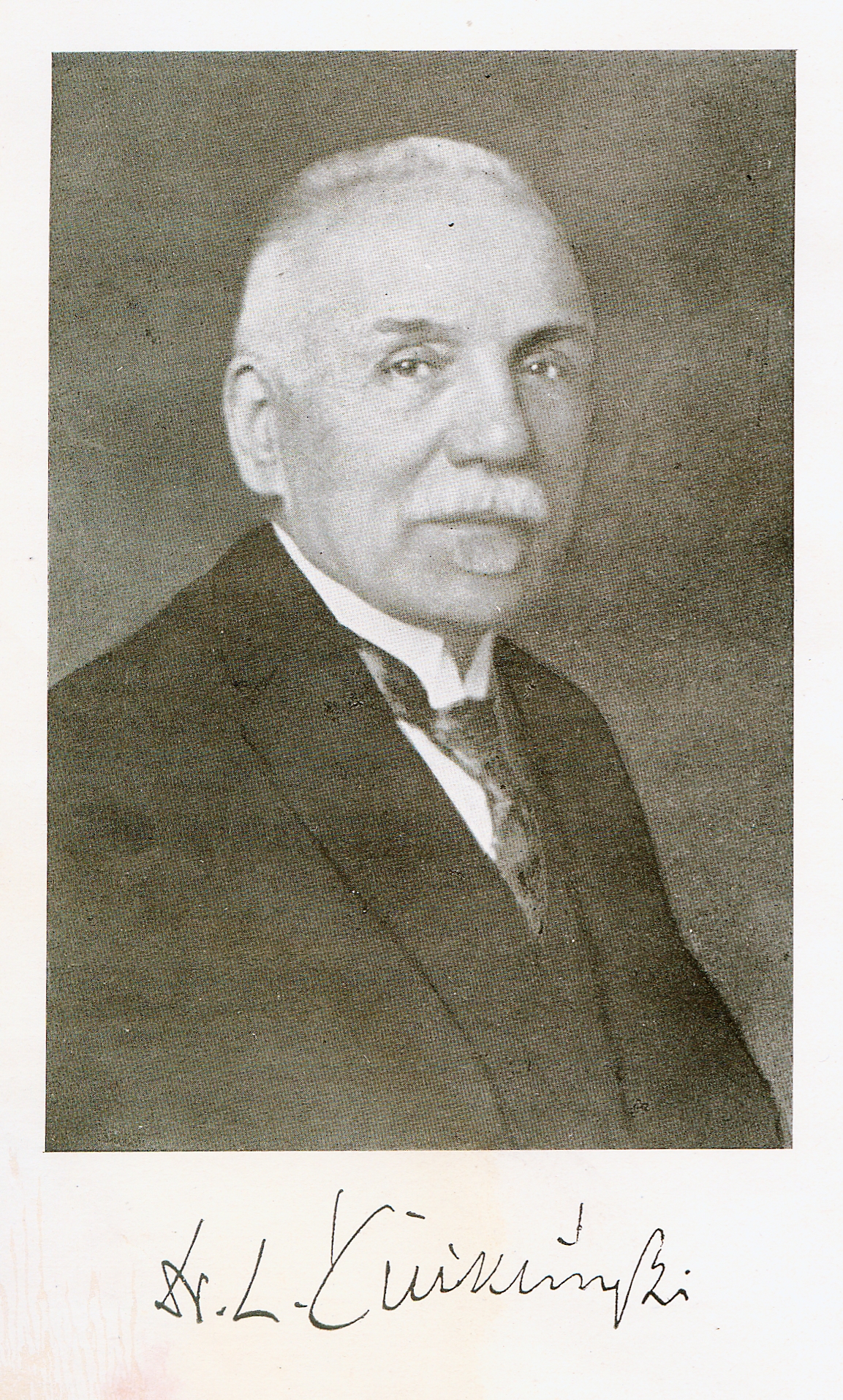|
Polish-Silesian Chronicle
''Chronicon Polono-Silesiacum'' ( pl, Kronika polsko-śląska, ''Polish-Silesian Chronicle'') or simply ''Chronicon Polonorum''Mrozowicz, Wojciech, “Chronica Polonorum”, in: Encyclopedia of the Medieval Chronicle, Edited by: Graeme Dunphy, Cristian Bratu. Consulted online on 02 December 2018 https://dx.doi.org/10.1163/2213-2139_emc_SIM_000154 is a medieval Polish chronicle based on Wincenty Kadłubek's ''Chronica seu originale regum et principum Poloniae'' and the anonymous poem ''Carmen Mauri'', with additional information on the history of Silesia. The date of its creation is uncertain and estimated at late 13th century, ''circa'' 1280 or at the turn of the century. The unknown author might have been a Cistercian monk from the Lubiąż Abbey. The work was likely ordered by Henry IV of Silesia Henryk IV Probus (Latin for ''the Righteous'') ( pl, Henryk IV Probus or ''Prawy''; german: Heinrich IV. der Gerechte) ( – 23 June 1290) was a member of the Silesian branch of ... [...More Info...] [...Related Items...] OR: [Wikipedia] [Google] [Baidu] |
Graeme Dunphy
Graeme Dunphy (born 1961) is a British professor of translation. Biography Dunphy was born in Glasgow in 1961. He studied German at the University of Stirling between 1979 and 1984, and Hebrew and the Old Testament at the University of St Andrews between 1984 and 1987. He completed his PhD in medieval German literature in 1998. Career Dunphy is a professor of translation at the University of Applied Sciences Würzburg-Schweinfurt. He was formerly a lecturer in English at the University of Regensburg from 1993 till 2013, and also taught at the Open University and the University of London via the open access programme. His work focuses primarily on German world chronicles, such as the Annolied, Kaiserchronik, Jans der Enikel, Christherre-Chronik, and Rudolf von Ems, among others. He has also worked on German Baroque literature (Martin Opitz and Melchior Goldast) and modern migrant literature (Meera Syal, Rafik Schami, Sevtap Baycılı, Halil Gür, Şinasi Dikmen, and Dj ... [...More Info...] [...Related Items...] OR: [Wikipedia] [Google] [Baidu] |
Wincenty Kadłubek
Wincenty Kadłubek ( 1150 – 8 March 1223) was a Polish Catholic prelate and professed Cistercian who served as the Bishop of Kraków from 1208 until his resignation in 1218. His episcopal mission was to reform the diocesan priests to ensure their holiness and invigorate the faithful and cultivate greater participation in ecclesial affairs on their part. Wincenty was much more than just a bishop; he was a leading scholar in Poland from the twelfth and thirteenth centuries. He was also a lawyer, historian, church reformer, monk, magister, and the father of Polish culture and national identity. The process of his canonization proved quite slow despite the initial momentum to see him proclaimed as a saint. The cause languished for several centuries until 1764 when Pope Clement XIII beatified him. Early life and education Little is known about Kadłubek's early life, but we do know he was born around 1160 to parents of elite status. Eleventh and Twelfth century Poland was a co ... [...More Info...] [...Related Items...] OR: [Wikipedia] [Google] [Baidu] |
Chronica Seu Originale Regum Et Principum Poloniae
200px, ''Historia Polonica'', Vincenti Kadłubkonis Episcopi Cracoviensis, 1612 ''Chronica seu originale regum et principum Poloniae'', short name ''Chronica Polonorum'', is a Latin history of Poland written by Wincenty Kadłubek between 1190 and 1208 CE. The work was probably commissioned by Casimir II of Poland. Consisting of four books, it describes Polish history. Kadłubek included in his work many legendary and anachronistic events in an attempt to connect Polish history to antiquity, for example battles against Julius Caesar or events from early medieval Poland (for example the story of Princess Wanda). Such practice was not uncommon among chronicles in the Middle Ages In the history of Europe, the Middle Ages or medieval period lasted approximately from the late 5th to the late 15th centuries, similar to the post-classical period of global history. It began with the fall of the Western Roman Empire a .... The first, second, and third books are composed as ... [...More Info...] [...Related Items...] OR: [Wikipedia] [Google] [Baidu] |
Carmen Mauri
Carmen Mauri (song of a Maur) is an anonymous Polish Middle Ages, medieval poem written in Latin. It tells the story of Polish Magnates in Poland and Lithuania, magnate Piotr Włast and his rebellion against Prince Władysław Wygnaniec. The poem has survived only in fragmentary form. Its author and exact date of creation is unknown, it is presumed that the author was a Benedictine monk and the poem was written between the second half of the 12th century and the beginning of the 14th century. Bibliography * * * "Cronica Petri Comitis Poloniae" together with the "Carmen Mauri", ed. M. Plezia, Kraków 1951. IHL Series 2 volume 3. *''Mały słownik pisarzy polskich'', 1969 History of Poland during the Piast dynasty Medieval Latin texts Polish poems Latin poems {{poem-stub ... [...More Info...] [...Related Items...] OR: [Wikipedia] [Google] [Baidu] |
History Of Silesia
In the second half of the 2nd millennium B.C. (late Bronze Age), Silesia belonged to the Lusatian culture. About 500 BC Scyths arrived, and later Celts in the South and Southwest. During the 1st century BC Silingi and other Germanic people settled in Silesia. For this period we have written reports of antique authors who included the area. Slavs arrived in this territory around the 6th century. The first known states in Silesia were those of Greater Moravia and Bohemia. In the 10th century, Mieszko I incorporated Silesia into Civitas Schinesghe, a Polish state. It remained part of Poland until the Fragmentation of Poland. Afterwards it was divided between Piast dukes, descendants of Władysław II the Exile, High Duke of Poland. In the Middle Ages, Silesia was divided among many duchies ruled by various dukes of the Piast dynasty. During this time, cultural and ethnic German influence increased due to immigrants from the German-speaking components of the Holy Roman Empire, ... [...More Info...] [...Related Items...] OR: [Wikipedia] [Google] [Baidu] |
Cistercians
The Cistercians, () officially the Order of Cistercians ( la, (Sacer) Ordo Cisterciensis, abbreviated as OCist or SOCist), are a Catholic religious order of monks and nuns that branched off from the Benedictines and follow the Rule of Saint Benedict, as well as the contributions of the highly-influential Saint Bernard of Clairvaux, known as the Latin Rule. They are also known as Bernardines, after Saint Bernard himself, or as White Monks, in reference to the colour of the "cuculla" or cowl (choir robe) worn by the Cistercians over their habits, as opposed to the black cowl worn by Benedictines. The term ''Cistercian'' derives from ''Cistercium,'' the Latin name for the locale of Cîteaux, near Dijon in eastern France. It was here that a group of Benedictine monks from the monastery of Molesme founded Cîteaux Abbey in 1098, with the goal of following more closely the Rule of Saint Benedict. The best known of them were Robert of Molesme, Alberic of Cîteaux and the English ... [...More Info...] [...Related Items...] OR: [Wikipedia] [Google] [Baidu] |
Lubiąż Abbey
Lubiąż Abbey (german: Kloster Leubus; pl, Opactwo cystersów w Lubiążu) is a former Cistercian monastery in Lubiąż, in the Lower Silesian Voivodeship of southwestern Poland, located about northwest of Wrocław.The monastery is considered to be one of the largest of its kind, and its 223 m long main facade is longer than that of El Escorial (207 m). The monastery was founded by the Silesian Duke Bolesław I the Tall, who had the monastery foundation charter drawn up in 1175. However, as early as 1163, monks from the Cistercian Abbey of Pforta arrived in Lubiąż and founded the new monastery on the then densely wooded bank of the Oder where it is now situated. Lubiąż developed into the most important monastery in Silesia and played a significant role in the settlement and development of Silesia. From here, seven more monasteries were founded in Poland by 1256. History The abbey is situated near a ford across the Oder river. Originally, the area had been a fortifie ... [...More Info...] [...Related Items...] OR: [Wikipedia] [Google] [Baidu] |
Henry IV Of Silesia
Henryk IV Probus (Latin for ''the Righteous'') ( pl, Henryk IV Probus or ''Prawy''; german: Heinrich IV. der Gerechte) ( – 23 June 1290) was a member of the Silesian branch of the royal Polish Piast dynasty. He was Duke of Silesia at Wrocław from 1266, and from also 1288 High Duke of the Polish Seniorate Province of Kraków until his death in 1290. Life Henry IV was the only son of Duke Henry III the White of Silesia-Wrocław by his first wife Judith, daughter of Duke Konrad I of Masovia. Under the tutelage of Władysław of Salzburg and King Ottokar II of Bohemia A minor upon the early death of his father in 1266, Henry IV was placed under the guardianship of his paternal uncle, Archbishop Władysław of Salzburg. The Archbishop decided that the constant travels between Wrocław and Salzburg were inappropriate for a child, and, in 1267, sent Henry to Prague to be raised at the court of King Ottokar II of Bohemia. Ottokar after Władysław's death in 1270 also took ove ... [...More Info...] [...Related Items...] OR: [Wikipedia] [Google] [Baidu] |
Ludwik Ćwikliński
Ludwik Ćwikliński (17 July 1853 in Gnesen (Gniezno), Province of Posen, Kingdom of Prussia – 3 October 1942 in Kraków) was a classical philologist, professor and rector of Lviv University The University of Lviv ( uk, Львівський університет, Lvivskyi universytet; pl, Uniwersytet Lwowski; german: Universität Lemberg, briefly known as the ''Theresianum'' in the early 19th century), presently the Ivan Franko Na ... (1893-1894), editor of "Eos" magazine (1894-1901). Between 1899 and 1902 he was a member of the Austrian parliament, and he was the Austrian Minister of Education between 1917 and 1918. 1853 births 1942 deaths Immigrants to Austria-Hungary Philologists from Austria-Hungary People from Gniezno Polish philologists People from the Province of Posen University of Lviv rectors {{Poland-academic-bio-stub ... [...More Info...] [...Related Items...] OR: [Wikipedia] [Google] [Baidu] |
Polish Chronicles
Polish may refer to: * Anything from or related to Poland, a country in Europe * Polish language * Poles Poles,, ; singular masculine: ''Polak'', singular feminine: ''Polka'' or Polish people, are a West Slavic nation and ethnic group, who share a common history, culture, the Polish language and are identified with the country of Poland in C ..., people from Poland or of Polish descent * Polish chicken * Polish brothers (Mark Polish and Michael Polish, born 1970), American twin screenwriters Polish may refer to: * Polishing, the process of creating a smooth and shiny surface by rubbing or chemical action ** French polishing, polishing wood to a high gloss finish * Nail polish * Shoe polish * Polish (screenwriting), improving a script in smaller ways than in a rewrite See also * * * Polonaise (other) {{Disambiguation, surname Language and nationality disambiguation pages ... [...More Info...] [...Related Items...] OR: [Wikipedia] [Google] [Baidu] |
History Of Silesia
In the second half of the 2nd millennium B.C. (late Bronze Age), Silesia belonged to the Lusatian culture. About 500 BC Scyths arrived, and later Celts in the South and Southwest. During the 1st century BC Silingi and other Germanic people settled in Silesia. For this period we have written reports of antique authors who included the area. Slavs arrived in this territory around the 6th century. The first known states in Silesia were those of Greater Moravia and Bohemia. In the 10th century, Mieszko I incorporated Silesia into Civitas Schinesghe, a Polish state. It remained part of Poland until the Fragmentation of Poland. Afterwards it was divided between Piast dukes, descendants of Władysław II the Exile, High Duke of Poland. In the Middle Ages, Silesia was divided among many duchies ruled by various dukes of the Piast dynasty. During this time, cultural and ethnic German influence increased due to immigrants from the German-speaking components of the Holy Roman Empire, ... [...More Info...] [...Related Items...] OR: [Wikipedia] [Google] [Baidu] |
13th-century Latin Books
The 13th century was the century which lasted from January 1, 1201 ( MCCI) through December 31, 1300 ( MCCC) in accordance with the Julian calendar. The Mongol Empire was founded by Genghis Khan, which stretched from Eastern Asia to Eastern Europe. The conquests of Hulagu Khan and other Mongol invasions changed the course of the Muslim world, most notably the Siege of Baghdad (1258), the destruction of the House of Wisdom and the weakening of the Mamluks and Rums which, according to historians, caused the decline of the Islamic Golden Age. Other Muslim powers such as the Mali Empire and Delhi Sultanate conquered large parts of West Africa and the Indian subcontinent, while Buddhism witnessed a decline through the conquest led by Bakhtiyar Khilji. The Southern Song dynasty would begin the century as a prosperous kingdom but would eventually be invaded and annexed into the Yuan dynasty of the Mongols. The Kamakura Shogunate of Japan would be invaded by the Mongols. Goryeo resiste ... [...More Info...] [...Related Items...] OR: [Wikipedia] [Google] [Baidu] |




